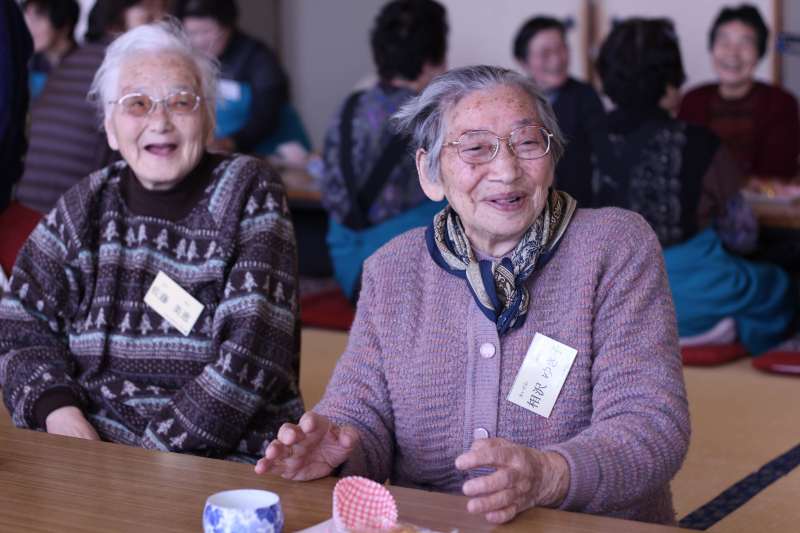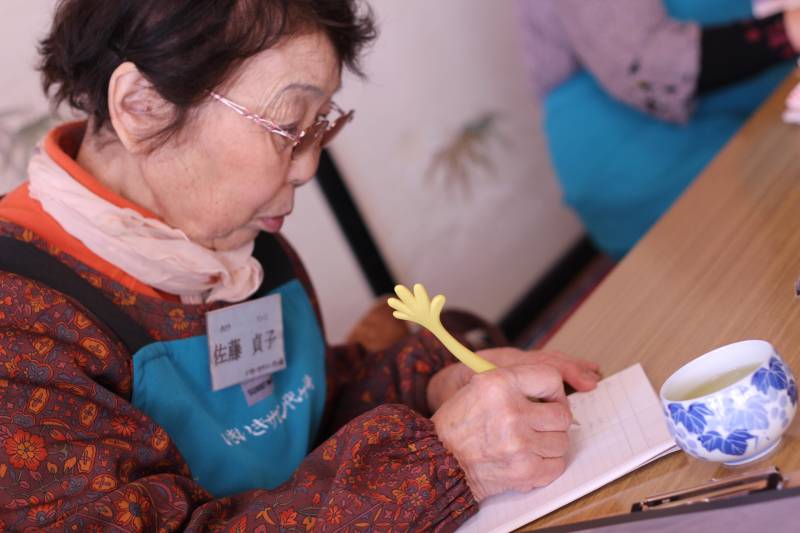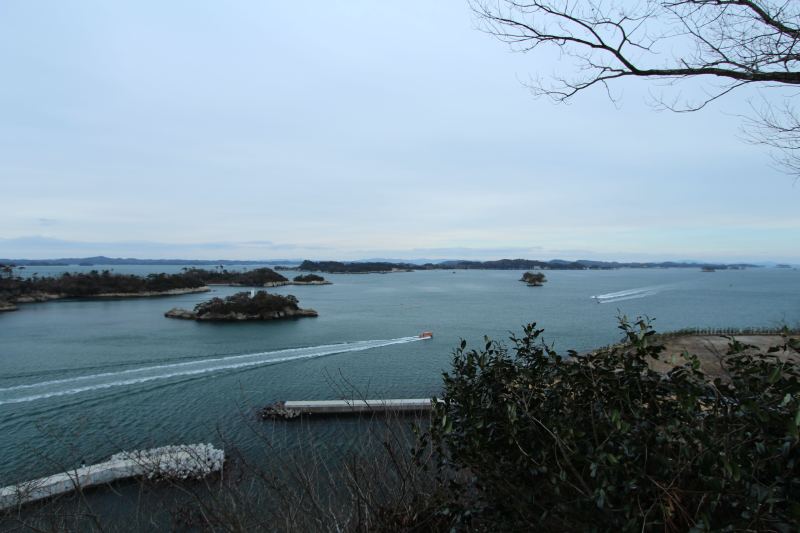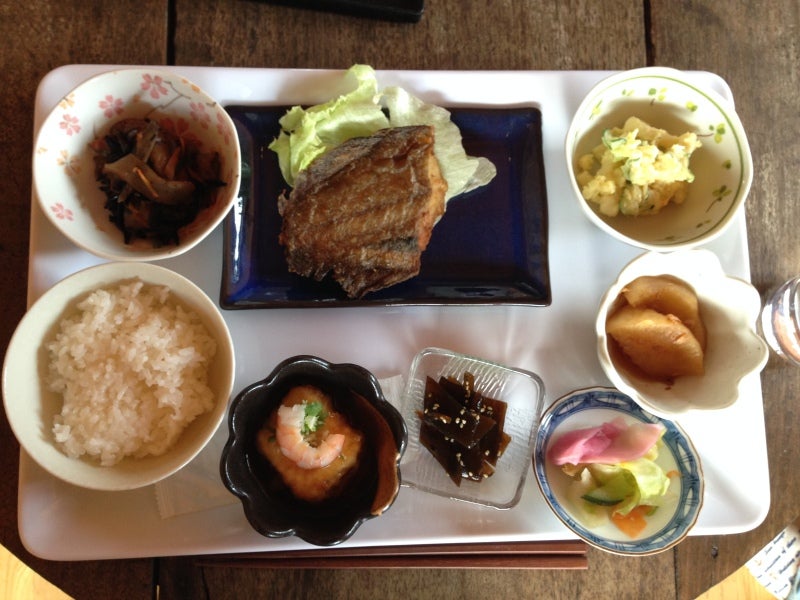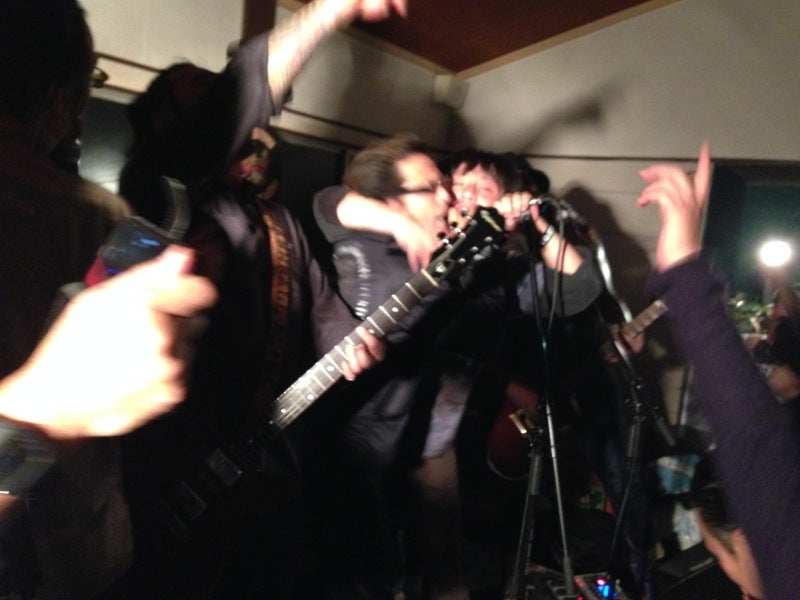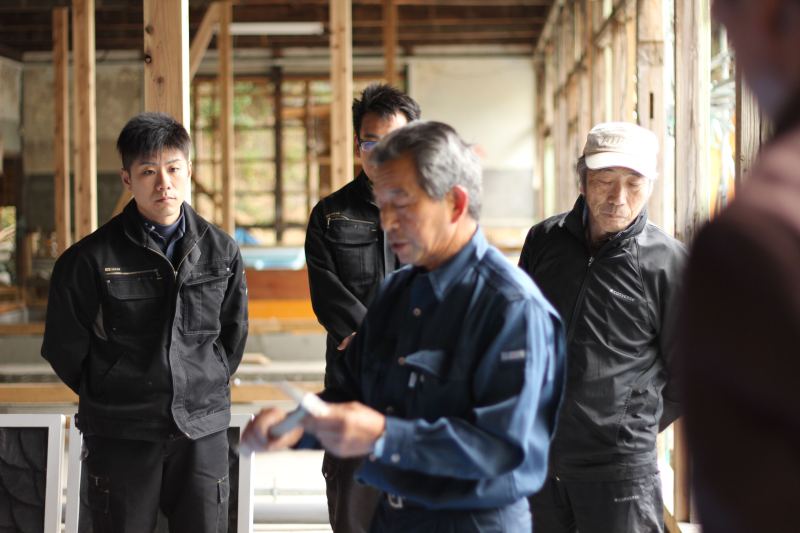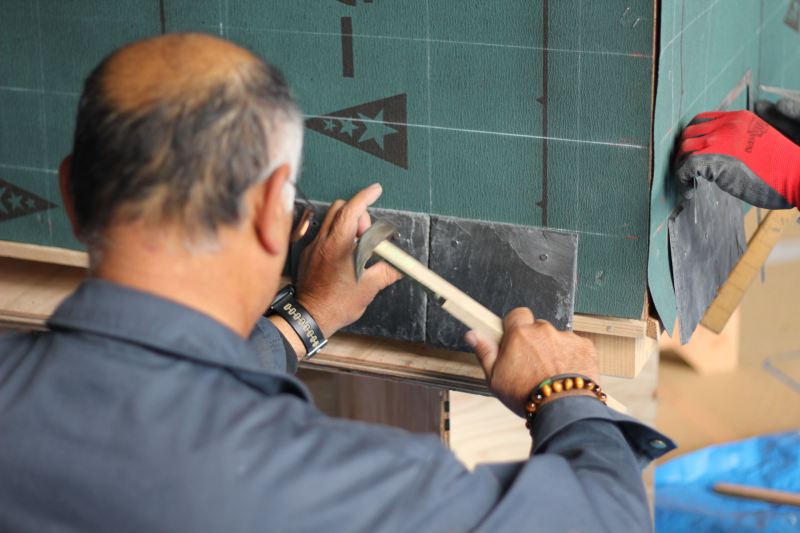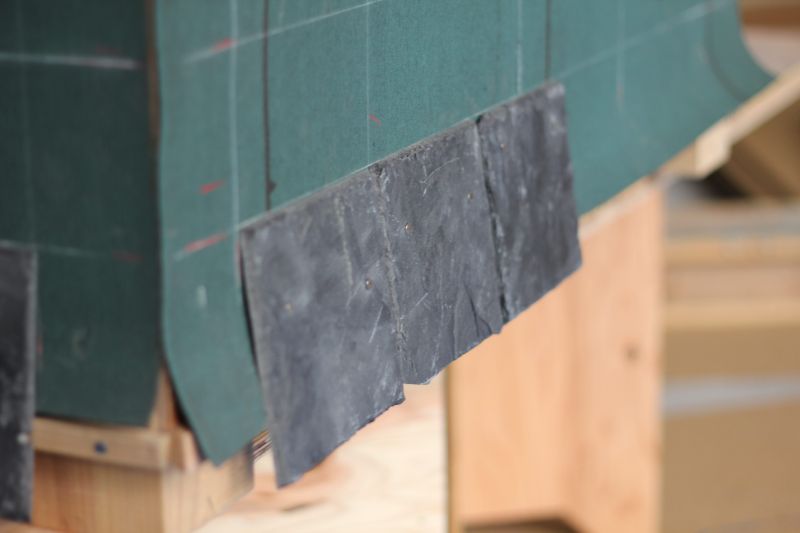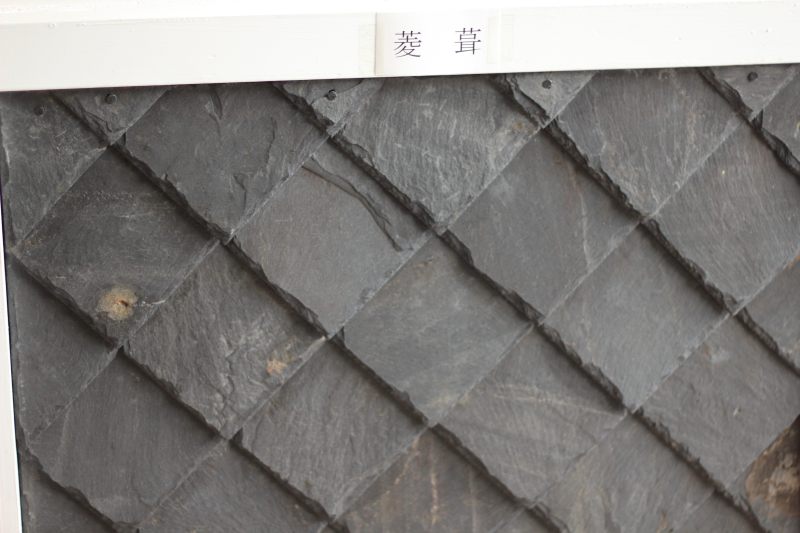いきいきサロン代ヶ崎(宮城県宮城郡代ヶ崎浜)
Iki Iki (Lively) Salon Yogasaki
七ヶ浜町代ヶ崎地区の「いきいきサロン代ヶ崎」は、お年寄りのための交流活動です。
現在、毎月第3土曜日の午前9時半から13時に中央公民館「浜風」に、地域のお年寄りの方々が毎回60名以上集まり活動されています。
活動内容は、歌にカラオケ、体操、お茶やランチなど。毎回、いろいろな活動を考えているそうです。
「いつも同じでは飽きてしまう。自分たちで活動を考え、発展していきたい。」と区長の伊藤さんは言います。
"Iki Iki Saron Yogasaki" is a community activity for the elderly that currently takes place the 3rd Saturday of every month from 9:30 in the morning to 1 o'clock in the afternoon at the Hamakaze welfare center (in Shichigahama). Over 60 elderly residents gather from the Shichigahama Yogasaki district, where they enjoy tea, sweets, gymnastics, singing, karaoke, and other activities. Lunch is included every time.
This innovative group aims to “mutually support the local people in the region". All of their activities, including pick-up, are performed on a voluntary basis.
運営の中心メンバー佐藤さんは70歳以上になりますが、とても元気。
毎月この活動を楽しみにされています。
Mrs. Sato is over 70 years old, but she is very lively at doing support activities for this group.
七ヶ浜町は、宮城県の中部に位置し、日本三景の松島の南部を形成しています。半島が仙台湾に突き出た辺りで、海と緑に囲まれ、気候は比較的温暖なことから、明治21年、国内で3番目に開かれた菖蒲田海水浴場は夏になると多くの観光客で賑わっています。
Shichigahama town is located in the middle of Miyagi Prefecture, along the the southern part of Matsushima, one of Japan’s 3 most beautiful sites. The peninsula extends into Sendai Bay, where the sea is surrounded by greenery. The climate is relatively mild. In 1888, Shobuta Hama was the third beach in Japan to be opened for tourists and a lot of people came.
また、花渕浜にある国際村は、外国人により、「山の軽井沢、湖の野尻湖、海の高山」と称され、「日本三大外国人避暑地」の一つとされています。
In addition, Kokusai-Mura (the international village) in Hanabuchi includes Takayama. The mountain place of Karuizawa (in Nagano), the Lake area of Nojiri (also in Nagano), and the sea side of of Takayama (here in Shichigahama)" are referred to as "Japan's three major foreign summer resorts”.
奇跡の一本松は陸前高田が有名ですが、ここにもあります。
「龍昇の松」
In Rikuzentakada (in Iwate), there is the famous miracle Ipponmatsu (tree). (In Shichigahama) as well, there is the Ryu Sho no Matsu (dragon pine tree).
そして、この代ヶ崎地区にある多聞山は、日本三景松島の四大観、壮観・麗観・偉観・幽観の一つ、偉観に選ばれており、松島の島々を雄大に見渡す事ができます。
Furthermore, Soukan, Reikan, Ikan, Yuukan are the four designated best spots for a majestic view overlooking the islands of Matsushima. Ikan is located on Tamon Mountain in this Yogasaki district.
七ヶ浜町は、東日本太平洋沖地震の津波により、面積の4分の1が浸水し、壊滅的な被害を受けました。海沿いのたくさんの家屋や松林が波に飲み込まれ、100名を超える方が命を落とされました。
During the earthquake in the East Pacific Ocean (on March 11th, 2011), one quarter of Shichigahama town was flooded and experienced devastating damage. A lot of houses and pine forests along the sea were swallowed by the waves. Over 100 people in the town were lost.
東日本太平洋沖地震から、まもなく4年。
地域の問題や課題も、時とともに変わっています。
It is now almost four years since the East Pacific Ocean Earthquake.
Issues and challenges facing the region have changed over time.
みんながいきいきと暮らせるまちづくり、地域で地域を支え合う、いきいきサロンの活動はまちづくりに大きな役割を果たしています。
The community development program Iki Iki Salon keeps everyone Iki Iki (lively). The project plays a major role in the town’s development.
Story and Photographs by Satoko Hayakawa
Translated by Keith Goldstein
・・・・・・・・・・・・・・・・・・・・・・・・・・・・・・・・・・・・・・・・・・・・・・・・・・・・・・・・・・・・・・・・・・・・・・・・・・・・・
私たち「ストーリーテリングプロジェクト」では、東北の支援活動についてのお話を集めています。
あなたの周りで支援活動をしている個人や団体について教えてください。
3分程のアンケートにご協力お願いします。(アンケートには以下から入れます。)
皆さまからいただいたご回答は、私たちのホームページ上に集められ、一つ一つのお話が支援をおこなっている団体や支援を検討している多くの団体に届けられる仕組みです。皆さまのニーズやフィードバックが支援している団体に直接届くことで、東北の皆さまやサポーターの皆さまにもっと貢献できる支援を形づくる画期的な試みです。
ご協力よろしくお願いします。
・・・・・・・・・・・・・・・・・・・・・・・・・・・・・・・・・・・・・・・・・・・・・・・・・・・・・・・・・・・・・・・・・・・・・・・・・・・・・
Have you heard about an interesting project that helps people in Tohoku? If so, please fill out this short online 3 minute questionnaire to tell us about activities that you know about.
The stories that we are collecting will be featured on our website and database. This is part of an innovative attempt to continue providing support for individuals and organizations active in Tohoku.
Please follow us on our Facebook page to read more about the stories:
https://www.facebook.com/jpstorytell
Thank you for your cooperation,
Japan Storytelling Project
・・・・・・・・・・・・・・・・・・・・・・・・・・・・・・・・・・・・・・・・・・・・・・・・・・・・・・・・・・・・・・・・・・・・・・・・・・・・・



